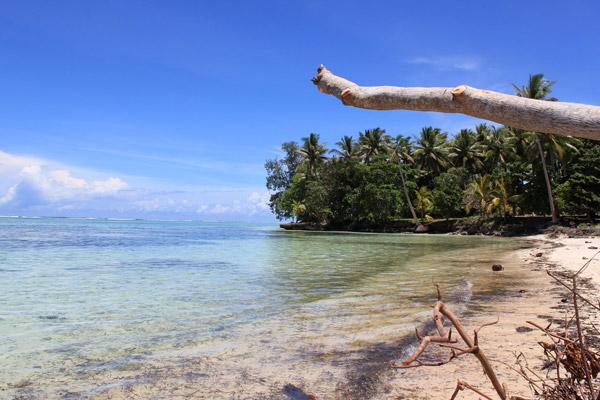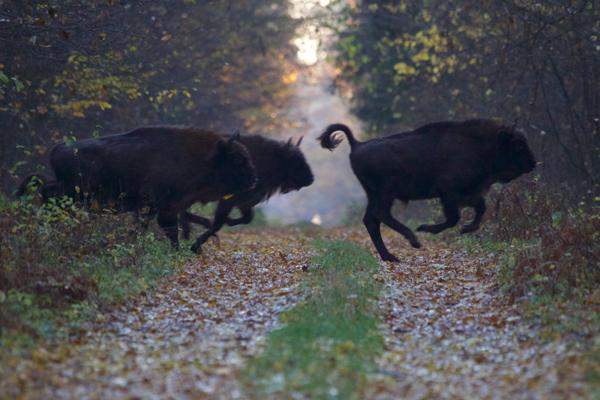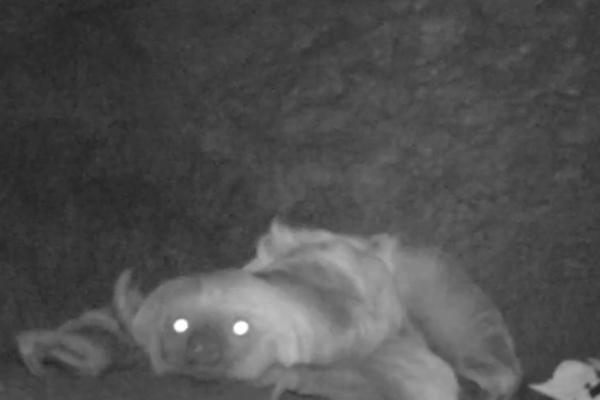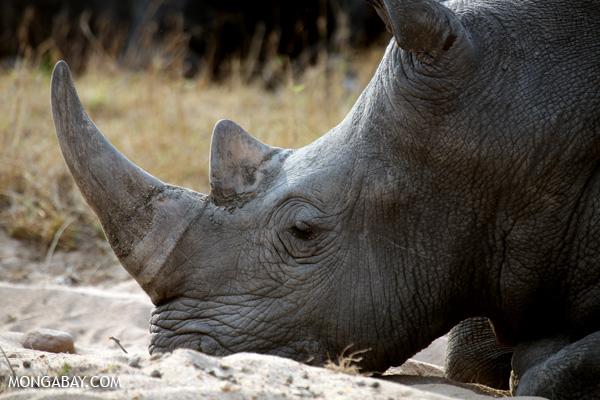A number of the world’s top conservation scientists have raised concerns about plans for commercial logging on Woodlark Island, a hugely biodiverse rainforest island off the coast of Papua New Guinea. The scientists, with the Alliance of Leading Environmental Scientists and Thinkers (ALERT), warn that commercial logging on the island could imperil the island’s stunning local species and its indigenous people.
“Woodlark Island is a biological jewel—home to at least 42 species that occur nowhere else on Earth,” said William Laurance, a professor at James Cook University in Australia and the director of ALERT.
The forty-plus endemic species are found on an island just a little larger than New York City, and include the Woodlark cuscus (Phalanger lullulae), an extravagantly-colored tree-dwelling marsupial that’s listed as Endangered by the IUCN Red List. In addition, the island is home to at least seven frogs, four reptiles, seven plants, six insects (two which haven’t been described yet), and 19 land snails. Despite so many unique species, conservationists say the island has been little-surveyed and likely contains many more species still unknown to science.
“For nature conservation, a plan this ambitious sets off alarm bells,” said ecologist Stuart Pimm from Duke University. “This island is jam-packed with unique species, many of which have tiny geographic ranges and so are highly vulnerable to major disturbances.”
The island’s many unique species may be due to the fact that it was never a part of the mainland of Papua New Guinea, though it sits less than 200 miles off shore.
Initially, local contacts told mongabay.com that the company involved, Karridale Limited, was pursuing a Timber Authority for 17,600 hectares of the island or about 22 percent of the whole island which covers around 80,000 hectares. But last month one contact warned that the Timber Authority had been extended to cover half the island.
“The information on...Karridale logging is very scarce,” Simon Piyuwes told mongabay.com. Piyuwes is a doctor on the mainland who grew up on Woodlark. He said the current Timber Authority runs from the “Talpos Mountain extending South and North to the coastlines and all the way east.”
Piyuwes added that the Timber Authority is currently in the hands of the Provincial Forest Committee. If the committee approves it, logging can begin.
Still, despite repeated requests by mongabay.com, Karridale Limited has refused to reveal how many hectares they are planning to log.
“We are a very small company [compared] to...big scale logging companies, our operation depends largely at the request on the survival of the people there, such as employment, resource income, also to provide them roads and maintenance,” Danny Chiu the operations manager of Karridale Limited told mongabay.com via email. “So far, the [Timber Authority] has been given to us for four years, till now, we still haven’t actually get into the operation [because] we follow strictly the guidelines given to us by the forestry and the local communities of Woodlark.”
A number of locals have said the company was “Malaysian,” however Chiu has denied this. Karridale Limited has offices in Boroko, a suburb of Port Moresby, the capital of Papua New Guinea.
“The company is being elusive about its plans and doesn’t appear to have consulted adequately with the local communities,” said Professor Corey Bradshaw with the University of Adelaide.
Woodlark Island, also known as Muyua Island, is home to about 6,000 indigenous people who have lived off the island’s abundant natural resources for thousands of years. Local contacts say logging plans have been approved by a minority of the population, adding that many didn’t know about the proposed operations.
While Woodlark Islanders have been felling trees for thousands of years, this was always small-scale, subsistence logging. According to satellite data on Global Forest Watch, the islanders have cleared 1,437 hectares from 2000 to 2012, amounting to 1.7 of the island’s whole. During the same time 287 hectares of forest have grown back. With this factored in, the island lost 1.3 percent during the past twelve years. Moreover, the people of Woodlark Island have been fighting for decades for legal control of their land. While most of the forests on mainland Papua New Guinea are customary—i.e. owned by local communities—Woodlark Island remains largely crown land and therefore in the hands of the state.
If Karridale Limited’s logging concession indeed extends across half the island, it may overlap with a gold mining concession held by an Australian company called, Kula Gold. The company’s mining concession covers 45,000 hectares, or more than half the island. The company has spent several years readying operations to mine on the island, including plans to dump the mine’s toxic tailings into the deep sea just off the island.
“This island is biologically and culturally unique, and it’s now in real danger,” added Laurance. “It’s vital that the world watch Woodlark Island very carefully.”
Previous articles on this issue can be found here: Extinction island? Plans to log half an island could endanger over 40 species and Loggers plan to clear 20 percent of tropical island paradise
This article was written by Jeremy Hance, a contributing writer for news.mongabay.com. For the original article and more information, please click HERE.





Friends Read Free